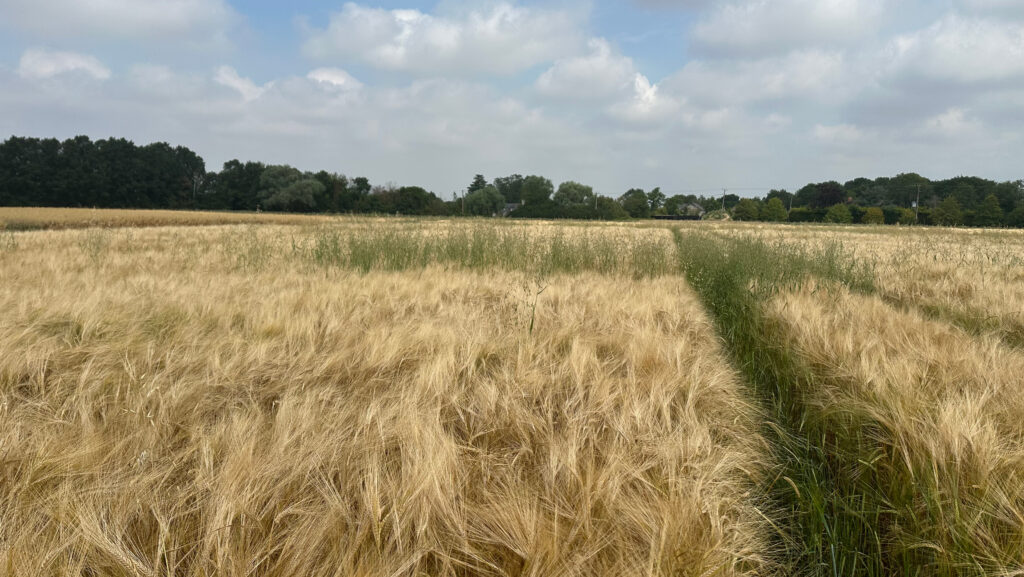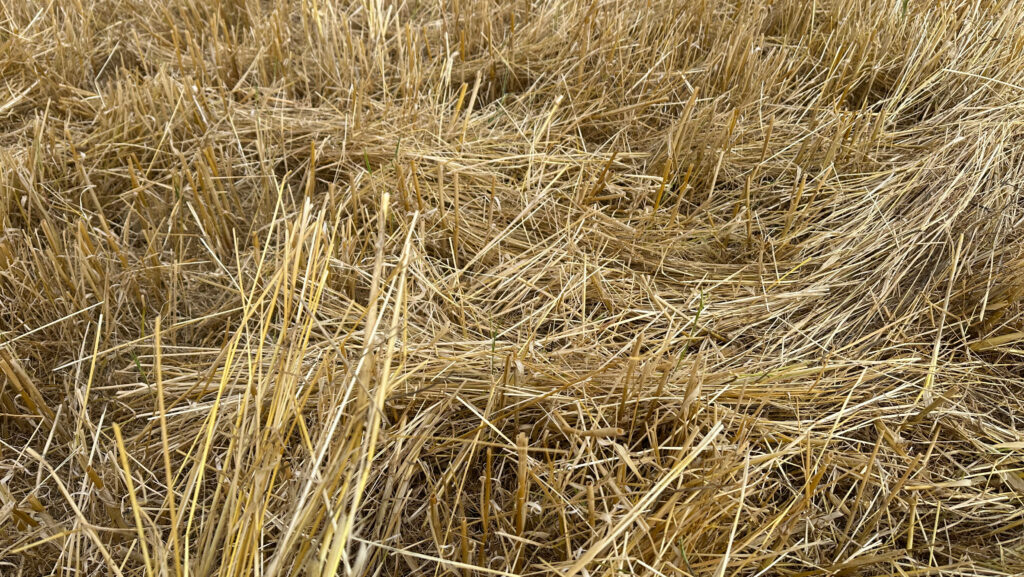Why traffic light approach is vital for blackgrass this autumn
 © Phil Hainey
© Phil Hainey Growers are advised to use a traffic light approach in each field to avoid drilling loss-making winter wheat crops, as the pressure to drill earlier rises this autumn in the wake of last winter’s drilling woes.
Last autumn saw the rain arrive in mid-October and there were few drilling opportunities after. Therefore, farmers may be tempted to go a bit earlier to avoid being caught out again.
However, as Agrii trials manager Steve Corbett points out, many areas are carrying a higher blackgrass burden.
See also: Somerset grower reaches direct-drilling 25-year milestone
Autumn 2023 was OK for stale seed-beds, but fields getting wet quickly and sowings pushed later meant a real mixed bag for weed control.
Some got a pre-emergence herbicide, but nothing following, in others pre-emergence sprays were not applied in the autumn as the weather turned.
Consequently, farmers never caught up on their blackgrass control. This highlights the importance of getting all the pieces of the jigsaw in place, he says.
Autumn 2022 had a different piece missing, the stale seed-bed. The consequences of this are highlighted by last year’s yields at Stow Longa, with winter wheat ranging from 5t/ha to 10t/ha, with the best performing plots with low grassweed pressure that established well.
This emphasises how important stale seed-beds will be this autumn. “We don’t want autumn 2024 turning out like autumn 2022.”
Traffic light approach
Steve recommends a traffic light approach when deciding on cropping and blackgrass strategies this autumn.
He advises assessing fields, scoring them either as red, amber, or green to help understand exactly where the blackgrass risk is.
Green fields can be drilled first. For amber ones, farmers need to think about delayed drilling. Then for the red fields, strong actions are required. Farmers need to think outside the box, such as spring cropping or a reset with rotational ploughing.
Agrii seed technical manager John Miles suggests starting the process with the red areas, as farmers look to limit the area of spring cropping.
Once they have the maximum area of spring cropping, consider amber areas which may need delayed drilling, and finally green.
“It’s down to how much spring cropping, as a large area brings its own risks and there are storage limitations as well,” he says.
Examples
Sustainability trials manager Ian Rudge highlights one example, a thin, patchy area of winter beans in the trial which is destined for a first wheat. “Is it a green? If so, then do it.”
However, the plot at Stow Longa is full of blackgrass, as the patches have allowed the weed in. Therefore, Ian says it’s an amber and requires a rethink.
“Don’t just follow beans with wheat because that’s what you have always done.”
John adds that farmers can’t afford lower yields, as wheat is quite expensive to grow compared with a spring crop.
We know 100/sq m ears of blackgrass equates to about 1t/ha of wheat yield loss every season. It’s why blackgrass in a wheat crop is a double whammy.
In another example, winter wheat with 55 ears/sq m is a red.
“Fields with 30-50 ears/sq m are on the edge – numbers can blow up quickly to 150-200 ears in the next crop and that’s 2t/ha of yield lost, says John.
“Delayed drilling does work, but with this level, it can easily go wrong. It would need a good stale seed-bed, have good management of crop residues, do a good job of drilling, and be able to travel to apply the herbicide programme.”
He suggests perhaps opting for a spring crop, as a low yielding wheat will be loss making.
Finally, he points to two plots, one with 9 ears/sq m and one with 17 ears/sq m. The 9 ears/sq m is a green and 17 ears/sq m is greenish.
“It will need a stale seed-bed, if not, it will end up being 50+ ears/sq m next summer.”
What about opting for SFI instead?
Sustainable farming incentive (SFI) options like NUM3 legume fallow could be a tempting alternative to underperforming crops in high blackgrass situations, offering a fixed payment.
However, farmers are being advised to consider the implications of these stewardship options on blackgrass, as a foray into SFI had to be abandoned to prevent a sizeable weed seed return.
Like many growers, winter beans remained undrilled at the Agrii blackgrass trial site, because of the very wet conditions.
So this spring, they opted to establish the NUM3 SFI 2023 option instead.
Sustainability trials manager Ian Rudge explained that as it was a small seeded crop, it needed shallow cultivation, but moving soil would encourage blackgrass.
So they carried out three stale seed-beds, spraying off the emerging plants, and overseeded the area on 30 April, only cultivating the top 12mm.
But despite the very shallow soil movement, a significant amount of blackgrass emerged late and combined with the uncompetitive stewardship crop, they ended up with a phacelia, buckwheat and blackgrass mix.
John Miles says it was due to the legacy from the previous winter barley crop which had blackgrass ear counts ranging from 90 to 250 ears/sq m.
By the end of May, the SFI plots had blackgrass counts ranging from 14 to 40 plants/sq m. This summer, they abandoned and sprayed off the whole area.
So this autumn, having not given up, they are establishing the 2024 rotational CNUM3 option, some containing perennial ryegrass, others with Timothy to quantify the benefit of grass competition over a grass less mix.
They predict the high blackgrass burden areas will be a write-off, but perhaps the grass may help in those low burden areas.
Straw management – don’t forget the blackgrass thatch

© Phil Hainey
One factor that growers often overlook is how to manage the straw from high blackgrass patches, as this can affect establishment of the following crop.
Agrii sustainability trials manager Ian Rudge points to one of the plots which has a significant amount of thatch in the stubble.
The level of blackgrass suggests that area needs a rethink with ploughing to reset and a spring crop.
But this will possibly need discing to chop up the material before ploughing, to allow complete burial of the seed. However, this will add an additional pass.

